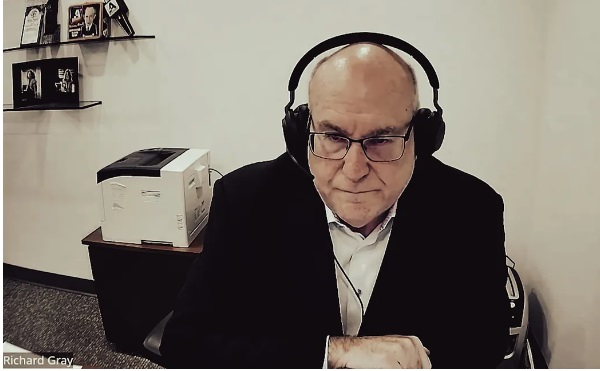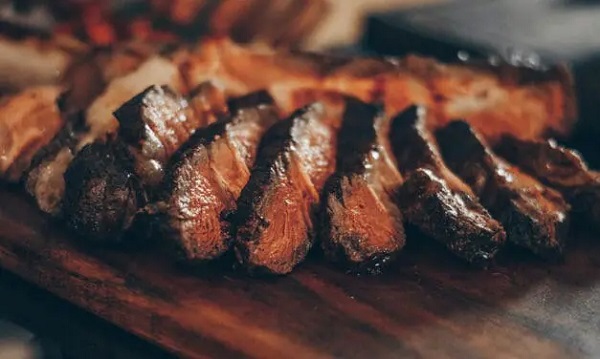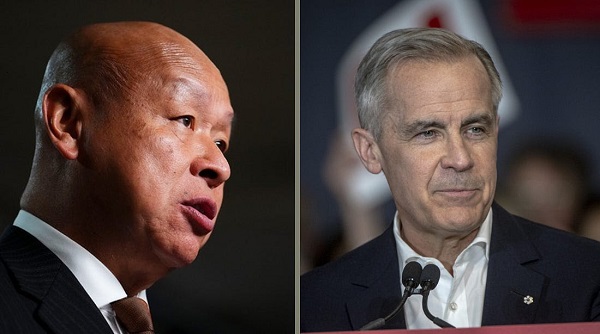Uncategorized
Inside the Shocking Parliamentary Ethics Hearing That Reveals the Depth of Media Bias in Canada

CTV’s Richard Gray
“CTV spliced together three short soundbites… to create an entirely made-up sentence. Literally fake news that entirely changed the meaning of what Pierre Poilievre said.” — Michael Cooper
It’s no secret that the mainstream media is a propaganda machine for the liberal elite, but the recent Parliamentary Ethics Committee hearing exposed just how deep this rot goes. The first hour of the committee meeting was a clinic on media corruption, and guess what? CTV News is at the center of it. This isn’t some tiny newsroom mistake—we’re talking about the manipulation of news to actively undermine Conservative leader Pierre Poilievre.
Let’s break down what we saw in that first hour, because it’s a lot more than just journalistic malpractice—it’s corporate media colluding with Trudeau’s Liberals to smear their political opposition.
CTV Gets Caught Red-Handed
In September 2024, CTV ran a story about Pierre Poilievre’s opposition to Trudeau’s carbon tax. Sounds simple, right? Except that the clip CTV aired wasn’t Poilievre’s actual words. They spliced together three different soundbites, in a way that fabricated an entirely new message. They deleted Poilievre’s key reference to the “carbon tax election,” making his comments sound more benign than they were.
The outcome? Canadians saw a falsified version of Poilievre’s stance on one of the most critical issues facing voters. And, surprise, surprise—it conveniently played into Trudeau’s hands by diluting Poilievre’s criticism of the carbon tax.
CTV’s manipulation wasn’t exposed by some internal review or journalistic conscience. No, it was called out by a Conservative staffer. Let that sink in. The most trusted name in Canadian news, caught fabricating news to attack the leader of the opposition—only to issue an apology after being called out.
Michael Barrett Drops the Hammer
The star of this hearing? Conservative MP Michael Barrett. He didn’t pull any punches when he confronted Richard Gray, Vice President of CTV News. Barrett’s opening salvo hit at the heart of the issue: “We’ve seen a lot of examples of CTV acting as activism masquerading as journalism.”
And he’s right. Barrett systematically tore apart CTV’s defense, pointing out that this wasn’t some innocent error. CTV deliberately altered Poilievre’s statements to undermine him politically. Barrett challenged Gray to explain why CTV had turned into an arm of Liberal propaganda, essentially parroting Trudeau’s talking points in their coverage.
Gray’s response? The same tired excuse we’ve heard time and again—“It was a mistake.” Well, no, it wasn’t. You don’t accidentally splice soundbites together to create a new sentence. That’s deliberate manipulation. And you certainly don’t edit out key phrases like “carbon tax election” without knowing exactly what you’re doing.
Barrett’s performance was masterful, exposing Gray’s weak defense and making it clear that CTV can’t be trusted to cover conservative leaders fairly. And why would they? Their cozy relationship with Trudeau and his Liberal government guarantees them favorable treatment, including regulatory relief worth millions.
Media-Political Collusion Exposed
Here’s where it gets even more disturbing. CTV is owned by Bell Media, a corporate giant that benefits directly from the Liberal government’s policies. Andrew Scheer hammered this point home during his cross-examination. Scheer pointed out that while CTV loses millions in its news operations, Bell Canada profits off government regulatory favors—to the tune of $40 million in “regulatory relief.” So, you think Bell Media has an incentive to help Trudeau out? Absolutely.
This isn’t just about biased reporting. This is about a corrupt relationship between a corporate media empire and the Liberal government. Trudeau’s regime is propping up CTV with regulatory favors while CTV is turning around and attacking Conservative leaders. It’s not a conspiracy theory—it’s fact.
Richard Gray’s Pathetic Defense
What was Richard Gray’s defense? Predictable. He fired two employees and insisted that this was an isolated incident. But here’s the kicker—Gray never even spoke to those employees directly to find out their intent. That’s right, the head of CTV News didn’t bother to personally investigate the two people who altered the clip of Poilievre. Instead, Gray claimed there was no “malicious intent” based on an internal investigation he didn’t personally conduct.
Even Liberal MP Anthony Housefather, who was hardly interested in holding CTV accountable, pressed Gray on this point. Housefather rightly asked how Gray could possibly testify about the employees’ intent if he never personally interviewed them. The answer? He couldn’t.
Gray kept repeating the same line—that there was no malicious intent—but how could he know? The truth is, CTV got caught, and now they’re scrambling to limit the damage without addressing the deeper issue of institutional bias.
NDP and Bloc MPs Play Softball
To no one’s surprise, the NDP and Bloc Québécois didn’t push CTV nearly hard enough. René Villemure of the Bloc briefly raised the question of whether CTV was dealing with just the consequences and not the intent behind the manipulation, but Gray dodged, and Villemure let it slide. Meanwhile, Matthew Green of the NDP expressed concerns about the incident undermining public trust but failed to dig deeper into why these mistakes always seem to hurt conservatives and help Liberals.
Here’s what the NDP and Bloc MPs missed: This isn’t just about one bad news clip. It’s about the systemic bias that runs through CTV and the rest of the mainstream media. These so-called “mistakes” always seem to happen when it comes to conservatives, don’t they? Funny how the Liberal government and its media allies get a free pass every time.
The Liberal-Media Swamp Is Real
This committee hearing made one thing crystal clear: CTV News is compromised. They aren’t interested in fair, unbiased reporting. They’re interested in maintaining their cozy relationship with the Trudeau government and attacking anyone who dares challenge Liberal orthodoxy.
Richard Gray’s weak defense and the media’s failure to self-police is just another sign that the swamp runs deep in Canada. Mainstream media outlets like CTV aren’t just making “mistakes.” They’re deliberately manipulating the news to protect their financial interests and political allies.
If you’re still watching CTV or any other mainstream outlet expecting fair coverage, you’re part of the problem. Turn them off. Find your news elsewhere. Because CTV—and the Liberal media establishment—sure as hell aren’t looking out for you.
Subscribe to The Opposition with Dan Knight .
For the full experience, upgrade your subscription.
Business
Beef is becoming a luxury item in Canada

This article supplied by Troy Media.
 By Sylvain Charlebois
By Sylvain Charlebois
Canadian beef prices have surged due to a shrinking cattle herd, high transportation costs, and potential market collusion
With summer weather settling in, Canadians are returning to a familiar ritual—ring up the barbecue. But as they approach the meat counter, many are faced with shockingly high prices. This year, the meat aisle has become a case study in supply-side economics and market dysfunction, leaving
consumers to wonder how this all came to be.
Since January, according to Statistics Canada, beef prices have surged dramatically. Striploin is up 34.2 per cent, top sirloin 33.7 per cent, and rib cuts nearly 12 per cent. Pork rib cuts and chicken breasts have each risen 5.9 per cent, while even meatless burger patties are 6.8 per cent more
expensive. Beef has led the way in these increases, and its dominance in the price hikes is striking. What’s particularly concerning is that it’s not just one cut of beef—virtually every option has seen a dramatic jump, putting pressure on Canadian consumers who were already grappling with rising food costs.
The cause behind these increases lies in Canada’s shrinking beef cow inventory, now at just 3.38 million head—the lowest since 1989. This represents a 1.2 per cent drop from last year, but it signals much more than a cyclical decline. Many cattle producers, facing an increasingly volatile market, are choosing to exit the industry while prices are favourable. Others are opting to reinvest in less risky sectors or even shift entirely to crop production, leaving the beef industry in a precarious state. In short, Canada’s beef industry is retreating, and with that retreat comes rising prices, fewer available cattle, and growing uncertainty.
South of the border, the U.S. is seeing a similar trend, but far less severe. According to the United States Department of Agriculture, the
American beef cow herd declined by just 0.5 per cent to 27.9 million head. This relatively modest drop, coupled with less disruption in their production practices, has resulted in more stable prices.
Over the past year, U.S. boneless sirloin steak rose 5.7 per cent, compared to a staggering 22 per cent in Canada. Ground beef saw a 10.8 per cent increase in the U.S., but 23 per cent in Canada. The price difference between the two countries is stark, and Canadians are feeling the inflationary pressure much more acutely.
There are several factors contributing to the price hikes: Canada’s vast geography, high transportation costs, a limited number of federally licensed beef processors, carbon pricing, and higher labour costs. Carbon pricing, in particular, has added a burden to sectors like beef production, where transportation costs are high. Regulations and logistical inefficiencies add to the costs, driving up prices for retailers and, ultimately, consumers.
This combination of factors is having a compounding effect on the price of beef, making it increasingly out of reach for many.
But there’s another possibility we can’t ignore: potential collusion within the industry. In Canada, a small number of large processors control much of the beef supply, which gives them significant influence over prices. The U.S. government has taken strong action against price-fixing among major meat packers like JBS, Tyson Foods, Cargill, and National Beef, leading to multimillion-dollar settlements. In Canada, however, the Competition Bureau has remained largely silent on similar concerns, allowing the possibility of price-fixing to persist unchecked. Perhaps it’s time for Canada to follow the U.S. lead and ensure the beef industry is held accountable for its actions.
The consequences of these rising costs are already evident. According to IBISWorld, Canadian per capita beef consumption fell by 7.1 per cent in 2023 and is expected to drop another 2.1 per cent in 2024. This isn’t merely a shift in dietary preferences—this is a structural change in consumer behaviour. Beef is becoming increasingly viewed as a luxury item, with many budget-conscious households turning to ground beef as a more affordable option. For many Canadians, beef is no longer a staple food but rather an occasional indulgence, reserved for special occasions or holiday meals.
This shift is unfortunate. Beef remains one of the most natural, sustainable sources of protein available to Canadians. Ranchers and processors have made significant strides in improving environmental stewardship, animal welfare, and food safety, often without recognition. Beef is not only nutritionally dense but also supports rural economies and provides a level of traceability few other protein sources can offer.
For many Canadian families, a summer steak on the grill is becoming more of a splurge than a staple. While Canadians will continue to enjoy beef, the frequency and volume of consumption will likely diminish.
Barbecue season hasn’t disappeared, but for many, it’s starting to look a little different: more sausages, more chicken, and fewer striploins. A shame, really, for a product that offers so much more than just taste.
Dr. Sylvain Charlebois is a Canadian professor and researcher in food distribution and policy. He is senior director of the Agri-Food Analytics Lab at Dalhousie University and co-host of The Food Professor Podcast. He is frequently cited in the media for his insights on food prices, agricultural trends, and the global food supply chain.
Troy Media empowers Canadian community news outlets by providing independent, insightful analysis and commentary. Our mission is to support local media in helping Canadians stay informed and engaged by delivering reliable content that strengthens community connections and deepens understanding across the country.
Uncategorized
Poilievre on 2025 Election Interference – Carney sill hasn’t fired Liberal MP in Chinese election interference scandal

From Conservative Party Communications
“Yes. He must be disqualified. I find it incredible that Mark Carney would allow someone to run for his party that called for a Canadian citizen to be handed over to a foreign government on a bounty, a foreign government that would almost certainly execute that Canadian citizen.
“Think about that for a second. We have a Liberal MP saying that a Canadian citizen should be handed over to a foreign dictatorship to get a bounty so that that citizen could be murdered. And Mark Carney says he should stay on as a candidate. What does that say about whether Mark Carney would protect Canadians?
“Mark Carney is deeply conflicted. Just in November, he went to Beijing and secured a quarter-billion-dollar loan for his company from a state-owned Chinese bank. He’s deeply compromised, and he will never stand up for Canada against any foreign regime. It is another reason why Mr. Carney must show us all his assets, all the money he owes, all the money that his companies owe to foreign hostile regimes. And this story might not be entirely the story of the bounty, and a Liberal MP calling for a Canadian to be handed over for execution to a foreign government might not be something that the everyday Canadian can relate to because it’s so outrageous. But I ask you this, if Mark Carney would allow his Liberal MP to make a comment like this, when would he ever protect Canada or Canadians against foreign hostility?
“He has never put Canada first, and that’s why we cannot have a fourth Liberal term. After the Lost Liberal Decade, our country is a playground for foreign interference. Our economy is weaker than ever before. Our people more divided. We need a change to put Canada first with a new government that will stand up for the security and economy of our citizens and take back control of our destiny. Let’s bring it home.”
-

 Business19 hours ago
Business19 hours agoCarney’s European pivot could quietly reshape Canada’s sovereignty
-

 Alberta19 hours ago
Alberta19 hours agoAlberta’s grand bargain with Canada includes a new pipeline to Prince Rupert
-

 Crime1 day ago
Crime1 day agoManhunt on for suspect in shooting deaths of Minnesota House speaker, husband
-

 Bruce Dowbiggin4 hours ago
Bruce Dowbiggin4 hours agoWOKE NBA Stars Seems Natural For CDN Advertisers. Why Won’t They Bite?
-

 Energy4 hours ago
Energy4 hours agoCould the G7 Summit in Alberta be a historic moment for Canadian energy?
-

 Crime4 hours ago
Crime4 hours agoMinnesota shooter arrested after 48-hour manhunt
-

 conflict5 hours ago
conflict5 hours ago“Evacuate”: Netanyahu Warns Tehran as Israel Expands Strikes on Iran’s Military Command
-

 Aristotle Foundation1 hour ago
Aristotle Foundation1 hour agoThe Canadian Medical Association’s inexplicable stance on pediatric gender medicine





